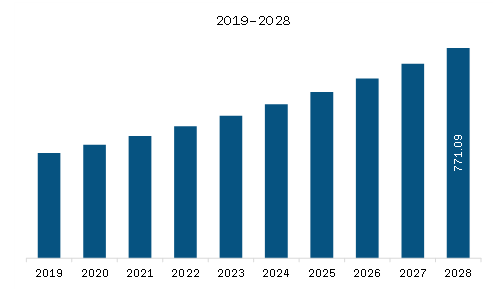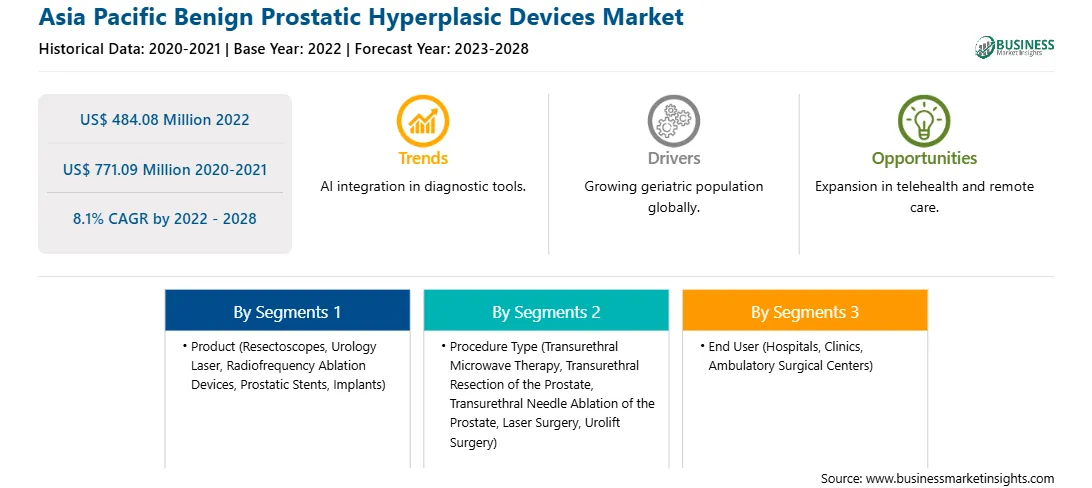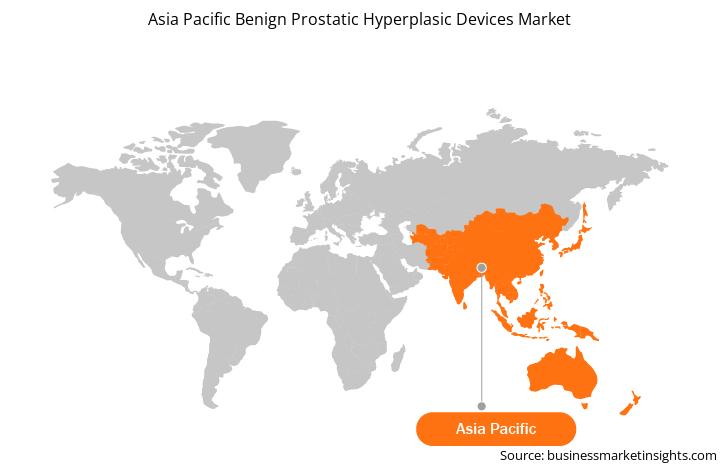The benign prostatic hyperplasic devices market includes many small and big companies, which are adopting various strategies to improve their market shares. These strategies include new product launches, regional expansions, and technological advancements. With continued innovation, benign prostatic hyperplasic devices are becoming safer, and treatments are becoming easier and more effective than ever. This is driving the acceptance of benign prostatic hyperplasic devices across the region. In April 2022, Teleflex Incorporated launched the UroLift System in Japan for treating BPH or enlarged prostate. The system was made available for purchase immediately after the launch. Further, in May 2020, Teleflex Incorporated received National Medical Products Administration (NMPA) approval for its UroLift System for treating BPH in China. In April 2020, Olympus announced the approval of iTind, a nonsurgical medical device, for the minimally invasive surgery of BPH. This is a temporarily urethral opening device that has been given a De Novo classification by the FDA and is a Class II medical device. In July 2020, Sonablate, a global leader in minimally invasive ultrasound technology, received the NMPA clearance for its minimally invasive device to treat BPH. The device was earlier approved for the treatment of local, low- and medium-risk prostate cancer in China. Later, it was approved for the treatment of BPH in the country. The active participation of market players in product innovation and development, and an increase in the approvals of products are likely to fuel the growth of the benign prostatic hyperplasic devices market in Asia Pacific during the forecast period.

Strategic insights for the Asia Pacific Benign Prostatic Hyperplasic Devices provides data-driven analysis of the industry landscape, including current trends, key players, and regional nuances. These insights offer actionable recommendations, enabling readers to differentiate themselves from competitors by identifying untapped segments or developing unique value propositions. Leveraging data analytics, these insights help industry players anticipate the market shifts, whether investors, manufacturers, or other stakeholders. A future-oriented perspective is essential, helping stakeholders anticipate market shifts and position themselves for long-term success in this dynamic region. Ultimately, effective strategic insights empower readers to make informed decisions that drive profitability and achieve their business objectives within the market.

| Report Attribute | Details |
|---|---|
| Market size in 2022 | US$ 484.08 Million |
| Market Size by 2028 | US$ 771.09 Million |
| Global CAGR (2022 - 2028) | 8.1% |
| Historical Data | 2020-2021 |
| Forecast period | 2023-2028 |
| Segments Covered |
By Product
|
| Regions and Countries Covered | Asia-Pacific
|
| Market leaders and key company profiles |
The geographic scope of the Asia Pacific Benign Prostatic Hyperplasic Devices refers to the specific areas in which a business operates and competes. Understanding local distinctions, such as diverse consumer preferences (e.g., demand for specific plug types or battery backup durations), varying economic conditions, and regulatory environments, is crucial for tailoring strategies to specific markets. Businesses can expand their reach by identifying underserved areas or adapting their offerings to meet local demands. A clear market focus allows for more effective resource allocation, targeted marketing campaigns, and better positioning against local competitors, ultimately driving growth in those targeted areas.

The Asia Pacific benign prostatic hyperplasic devices market is segmented on the basis of product, procedure type, end user, and country. Based on product, the market is segmented into resectoscopes, urology lasers, radiofrequency ablation devices, prostatic stents, and implants. The resectoscopes segment is expected to hold the largest share of the market in 2022. On the other hand, the urology lasers segment is expected to register the highest CAGR during the forecast period. Based on procedure type, the Asia Pacific benign prostatic hyperplasic devices market is segmented into transurethral microwave therapy, transurethral resection of the prostate, transurethral needle ablation of the prostate, laser surgery, urolift surgery, and others. The transurethral resection of the prostate segment held the largest market share in 2022, and it is also expected to register the highest CAGR in the market during the forecast period. Based on end user, the Asia Pacific benign prostatic hyperplasic devices market is segmented into hospitals, clinics, ambulatory surgical centers, and others. The hospital segment held the largest market share in 2022, while the clinics segment is expected to register the highest CAGR during the forecast period. Based on country, the Asia Pacific benign prostatic hyperplasic devices market is segmented into China, Japan, India, Australia, South Korea, and Rest of Asia Pacific. In 2022, China held a larger market share. On the other side, and India is expected to register a higher CAGR during the forecast period.
KARL STORZ SE & Co. KG; Olympus Corporation; Boston Scientific Corporation; Teleflex Incorporated; and Richard Wolf GmbH are among the leading companies in the Asia Pacific benign prostatic hyperplasic devices market.
The Asia Pacific Benign Prostatic Hyperplasic Devices Market is valued at US$ 484.08 Million in 2022, it is projected to reach US$ 771.09 Million by 2028.
As per our report Asia Pacific Benign Prostatic Hyperplasic Devices Market, the market size is valued at US$ 484.08 Million in 2022, projecting it to reach US$ 771.09 Million by 2028. This translates to a CAGR of approximately 8.1% during the forecast period.
The Asia Pacific Benign Prostatic Hyperplasic Devices Market report typically cover these key segments-
The historic period, base year, and forecast period can vary slightly depending on the specific market research report. However, for the Asia Pacific Benign Prostatic Hyperplasic Devices Market report:
The Asia Pacific Benign Prostatic Hyperplasic Devices Market is populated by several key players, each contributing to its growth and innovation. Some of the major players include:
The Asia Pacific Benign Prostatic Hyperplasic Devices Market report is valuable for diverse stakeholders, including:
Essentially, anyone involved in or considering involvement in the Asia Pacific Benign Prostatic Hyperplasic Devices Market value chain can benefit from the information contained in a comprehensive market report.